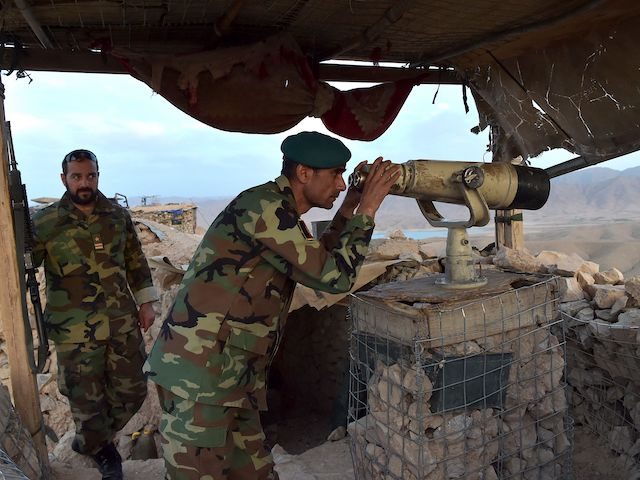The Long War Journal (LWJ) reported on Monday that during the six weeks that have elapsed since U.S. troops officially began withdrawing from Afghanistan, the Taliban has “seized control of 32 additional districts, their reach spanning nearly half of the country’s 34 provinces.”
The Taliban now controls 106 districts in total, compared to only 94 for the government in Kabul. Of these, 198 districts are “contested” between the two sides. The districts controlled by the government are more densely populated, however, so almost twice as many Afghans live in areas controlled by Kabul than in districts controlled by the Taliban.
LWJ noted the Taliban was able to overrun five more district centers since May 1, but the government has retaken control of four and is currently fighting for control of the fifth.
According to the LWJ analysis, the Taliban is “using local tribal leaders and other influential figures to convince Afghan security personnel and government officials to either surrender or abandon these district centers.” LWJ deemed these claims credible, if perhaps somewhat exaggerated in scale, because Kabul’s forces have been unable to recapture more than a handful of the territories it has lost.
The Taliban also launched bolder attacks against provincial capitals now that American air support for government troops has been withdrawn. LWJ expected the Taliban to begin making bids for total control of several provinces soon.
Other sources have noted the Taliban’s recent string of successes at capturing districts, the difficulty Afghan troops have encountered when trying to retake them, the sizable number of government soldiers and tribal leaders surrendering to Taliban forces, and the growing threat of a direct attack on Kabul.
The Taliban has previously concentrated on tightening its grip over rural Afghanistan and refrained from hitting urban population centers, fearful of devastating U.S. and NATO airstrikes in response. When the airstrikes halted in May, Taliban forces began probing the weaknesses of these heavier urban targets.
On Friday, the Taliban captured the strategic district of Ishkimish, a travel hub that gives the Taliban a shot at four more districts. Government forces reportedly ran out of ammunition during the battle and did not receive the air support they were hoping for.
Some veteran Afghan military officers complained to The Economist on Saturday that Kabul’s forces are weaker and less well-equipped today, on the eve of U.S. and NATO withdrawal, than the security forces left behind after Russian withdrawal in the late 1980s.
The Economist noted Afghan forces today have a distressing tendency to fall back or surrender under Taliban assault, in some cases because they are unpaid and under-supplied, as appears to have been the case in Ishkimish. Local tribal leaders have been all too helpful at negotiating surrenders.
Less pessimistic analysts suggested the Taliban is less formidable than the militants who swept in after Soviet withdrawal, and they lack the numbers and organization to capture and hold large cities. The thinly spread force of elite commandos fielded by Kabul has reportedly been quite effective against Taliban fighters when they expose themselves to concentrated attack by attempting to capture major targets instead of rural outposts.
Both hopeful and pessimistic observers believe this summer will be a turning point for Afghanistan, featuring numerous pitched battles as the Taliban tries to prove it can conquer more than the hinterlands. Taliban strategists will be carefully watching Kabul’s elite troops and air forces, looking for signs of flagging morale, exhaustion, or equipment failure.
The Pentagon is reportedly considering a more “flexible” withdrawal strategy that would leave enough American airpower in Afghanistan to tip some of these crucial battles to government forces, especially if the Taliban appears to be planning a major offensive against Kabul or Afghanistan’s second-largest city, Kandahar.
If withdrawal proceeds on the current schedule, American forces are supposed to leave all airbases in Afghanistan by the end of July, so U.S. air support for Afghan government forces would have to be launched from elsewhere in the Persian Gulf. The Biden administration has made no firm public commitment to protect even Kandahar or Kabul from Taliban attack.

COMMENTS
Please let us know if you're having issues with commenting.